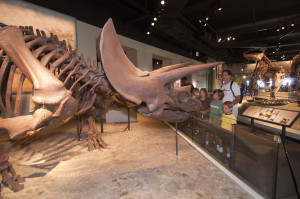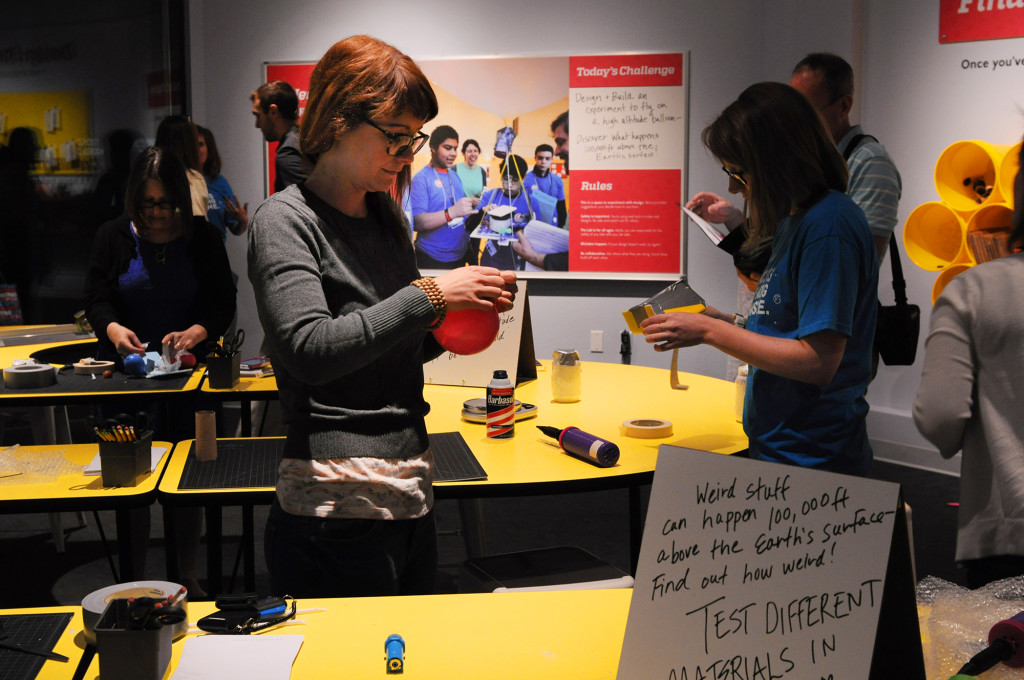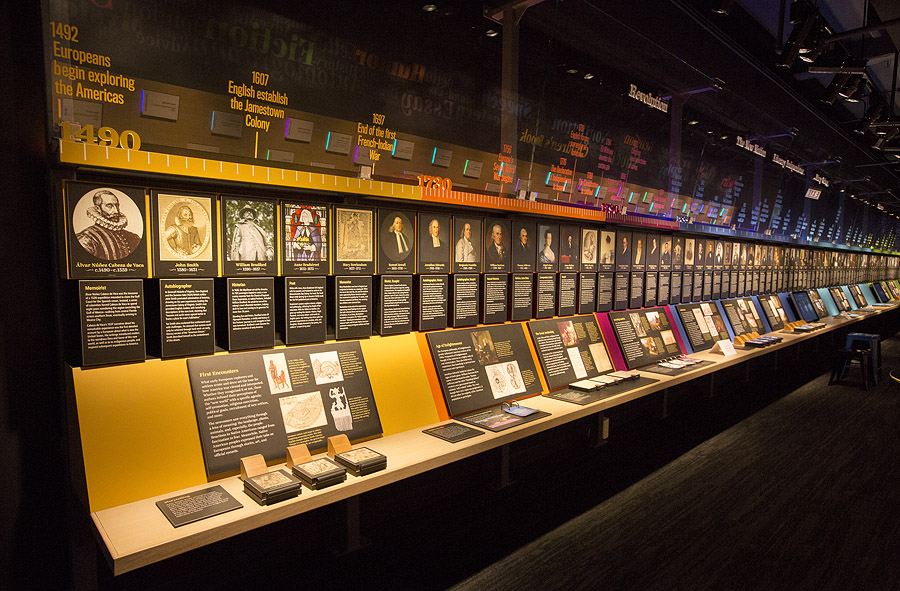A day at the museum: Exploring the iconic Field Museum in Chicago

Encounter bugs, mummies and a tyrannosaurus rex at one of Chicago’s most beloved museums
By Taylor Tolbert
As one of the three museums at the Chicago’s museum campus, the Field Museum is one of the city’s many must-see attractions. Even if you’re not the museum typ e, I highly recommend a visit to the Field Museum. There really is something for everyone, kids and adults.
e, I highly recommend a visit to the Field Museum. There really is something for everyone, kids and adults.
I’ve been to the Field Museum quite a few times, but I’m still overwhelmed every time I step foot inside. The building itself is incredible. It’s so massive in size, I never know where to begin, as there are three floors packed with such a variety of exhibits. Obviously, Sue is the main attraction. Standing in the middle of the main hall as the largest and most complete T-Rex skeleton in the world, she’s certainly earned her keep at the museum. Her real head is too heavy to be mounted on the body, so there is a model attached. The real head, weighing in at 600 pounds, is in a display on the upper level of the museum.
After looking at a map, I decided to start on the upper level and work my way down. The first exhibit I walked into was Restoring Earth. This one is great for kids. It’s educational and interesting, but also very interactive. There are touch-screen videos, fun experiments  and stunning visuals of everything from coral reefs to beetles and butterfly wings. This exhibit is all about conserving and restoring the planet and the city in many different ways. The cool thing about the entire museum, and especially this particular exhibit, is that the curators educate visitors on global topics, while also managing to relate them back to Chicago in some way.
and stunning visuals of everything from coral reefs to beetles and butterfly wings. This exhibit is all about conserving and restoring the planet and the city in many different ways. The cool thing about the entire museum, and especially this particular exhibit, is that the curators educate visitors on global topics, while also managing to relate them back to Chicago in some way.
The next exhibit on my walk was Traveling the Pacific. This one felt like cruel and unusual punishment considering it’s all about beautiful, tropical islands, and I was there on a gloomy, gray Chicago day. But it was a nice escape. The different rooms displayed beach backdrops of Hawaii and the Marshall Islands with information about native plants, boat mechanics and volcanoes native to the islands.
One of my favorite rooms in the museum was the Grainger Hall of Gems. This one is definitely aimed at the moms who need a break from dinosaurs and bugs. The whole room is strewn with beautiful gems and jewelry; I could have spent the entire day ogling at the sparkling pieces. It’s the most comprehensive gemstone exhibit in the United States, with diamond, opal, turquoise, topaz and almost any other gem you could wish for. The jewelry is absolutely stunning.
Although she tends to be the star of the museum, Sue isn’t the only dinosaur in the building. Using fossils, videos and interactive elements, the Evolving Planet exhibit travels back in  time more than four billion years and shows visitors an age when dinosaurs ruled the Earth. The dinosaur skeletons are colossal. A large portion of the exhibit is focused on life under water in prehistoric times, which made me very happy that some of these creatures no longer exist. The skeleton of an underwater reptile that looked to be about the size of a dolphin is on display. Not something I would want to encounter ever. There are four Mass Extinction activities that, again, mix education and interactivity perfectly.
time more than four billion years and shows visitors an age when dinosaurs ruled the Earth. The dinosaur skeletons are colossal. A large portion of the exhibit is focused on life under water in prehistoric times, which made me very happy that some of these creatures no longer exist. The skeleton of an underwater reptile that looked to be about the size of a dolphin is on display. Not something I would want to encounter ever. There are four Mass Extinction activities that, again, mix education and interactivity perfectly.
On the upper level, you can also find Plants of the World, Pacific Spirits, the Hall of Jades and the Fossil Preparation Laboratory.
After spending more than enough time on the upper floor, I made my way down to the main level, Sue’s home. This is where you’ll find the special, more temporary exhibits, the first of which being Creatures of Light: Nature’s Bioluminescence. This was my favorite exhibit of the day, definitely. The whole thing was very sensory and complete, and solely in the dark.  There are no lights on overhead so as to properly reveal just what the focus is — bioluminescence. A few displays at the beginning explain the science behind it, and then the visuals really take over. There are displays of light-producing land and sea animals, as well as more bugs and mushrooms that glow. Again, the exhibit is incredibly educational without being boring. Information is presented on iPads, coupled with light displays and models of giant mushrooms. The exhibit even includes its own soundtrack. These creatures of light are only at the museum until Sept. 8, so be sure to not miss it.
There are no lights on overhead so as to properly reveal just what the focus is — bioluminescence. A few displays at the beginning explain the science behind it, and then the visuals really take over. There are displays of light-producing land and sea animals, as well as more bugs and mushrooms that glow. Again, the exhibit is incredibly educational without being boring. Information is presented on iPads, coupled with light displays and models of giant mushrooms. The exhibit even includes its own soundtrack. These creatures of light are only at the museum until Sept. 8, so be sure to not miss it.
Another special exhibit, Scenes of the Stone Age, has made its way to the Field Museum in its North American debut, displaying exquisite cave paintings of Southern France from almost 20,000 years ago. The paintings haven’t been seen by the public in nearly 50 years, but artists and curators have recreated them down to the last detail.
Other highlights from the main level include World of Mammals, The Ancient Americas and What is an Animal?
The ground level of the museum doesn’t have nearly as many exhibits, but it is absolutely  worth checking out, especially if you’re interested in ancient Egypt. Almost anything you could imagine relating to this early civilization is on display in Inside Ancient Egypt. There is an extensive collection of mummies, floor-to-ceiling hieroglyphics, a tomb, and many different artifacts of all kinds.
worth checking out, especially if you’re interested in ancient Egypt. Almost anything you could imagine relating to this early civilization is on display in Inside Ancient Egypt. There is an extensive collection of mummies, floor-to-ceiling hieroglyphics, a tomb, and many different artifacts of all kinds.
Just down the hall, you’ll find yourself shrinking down to the size of a bug for an Underground Adventure. You have to use your imagination a little bit for this one, but it’s great for kids or kids at heart who really like plant and insect life below soil.
I’ve never thought of myself as very interested in science and natural history, yet I always have such a great time at the Field Museum. It doesn’t shove information down your throat, but offers it in interesting and creative ways. With rotating exhibits, there’s always something new to see and do.
The Field Museum is open every day except Christmas from 9 a.m. to 5 p.m. and is located 1400 S. Lake Shore Drive. www.FieldMuseum.org









